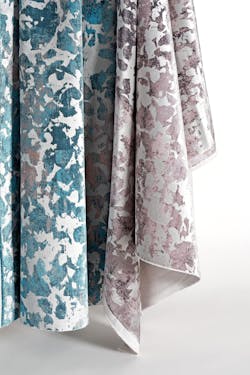As we approach the end of 2023, the landscape of travel and leisure continues to evolve, shaped by emerging trends and the evolving preferences of consumers and society. The hospitality industry remains at the forefront of adaptation by drawing on those to elevate the guest experience. To remain on the cusp of what consumers — and hospitality designers and operators — need, Momentum Textiles & Wallcovering consulted their research and sources in and outside these industries to delve into the biggest and most relevant trend contenders for 2024 and beyond. Below, we'll explore four of them and see how each of stands to make an impact in the coming year.
These trends are indicative of an industry-wide evolution in hospitality that prioritizes wellness, sustainability and the efficient utilization of space as much as it does sophistication. They shed light on their impact, potential benefits, and practical applications, helping designers stay on the cutting edge of industry conversations and meeting the shifting needs of specifiers.
Quiet Luxury
Emphasizing understated elegance, the popular fashion trend “quiet luxury” has made its way into the realm of interior design. Centered on a refined simplicity, quiet luxury entails investing in high-quality, timeless pieces crafted with meticulous skill. The trend gravitates towards muted neutral tones as well as dark and dramatic hues. Moreover, an essential element of the trend is the emphasis on comfort. Introducing textures can infuse a space with a sense of coziness. Quiet Luxury also champions the use of natural materials for decor and accessories to impart the space with a polished feel.
Biophilic Elements
Transforming indoor spaces into peaceful, welcoming environments that encourage mental and emotional well-being has become an increasingly popular need in the modern hospitality world. Biophilic design incorporates organic patterns that reflect natural tones into spaces to foster a sense of tranquility and relaxation in otherwise sterile environments. Paired with the integration of plants and sunlight in indoor spaces, designers aim to reconnect people with nature to create a soothing, meditative effect on the mind. Joining biophilic design is an increased interest in wellness spaces, such as “sonic healing spaces” or “sound baths,” where acoustic solutions can further positively impact overall health and mental state in the ever-evolving push to reimagine community interiors.
Designing for Small Spaces
Designing for Mixed-Used Spaces
Due to the rise of “neo-nomadism” and “bleisure” travel, hotel lobbies are increasingly being designed as part of larger, mixed-use developments, integrating with nearby coworking spaces, restaurants and retail boutiques to offer a full-service experience to their guests. Yet, the evolution of mixed-use spaces within the hospitality industry goes beyond the conventional retail and dining experiences, encompassing a widearray of diverse elements.
For example, incorporating art and cultural pieces in hotel lobbies enhances local immersion, creates ambiance and distinguishes them from conventional hotels, adding to their memorability. Including furnishings upholstered with dynamic patterns and vibrant colors can make a hotel lobby feel like a unique, artistic, and locally connected hub. This cultural blend is further enhanced by ensuring that the remainder of the hotel is as captivating and guest-friendly as the lobby, especially the coworking areas, which hold increasing significance for today's neo-nomadic workers. In addition to smart tech integration, adding acoustic features gives these areas the perfect amount of sound absorption, turning them into focus-finding spaces for every kind of work. These combined trends contribute to the evolution of mixed-use spaces, enhancing their appeal, functionality, and overall guest experience.



